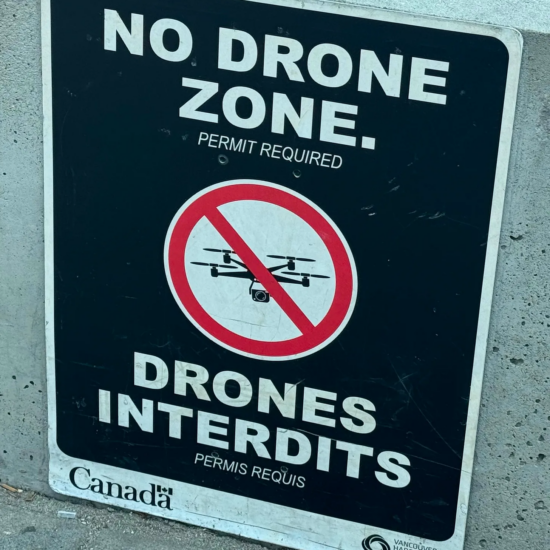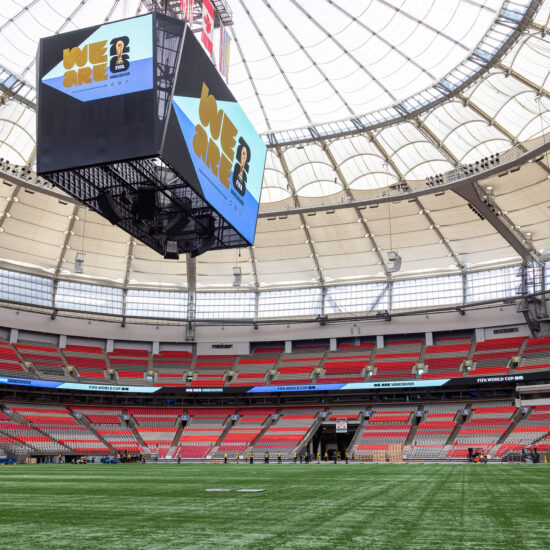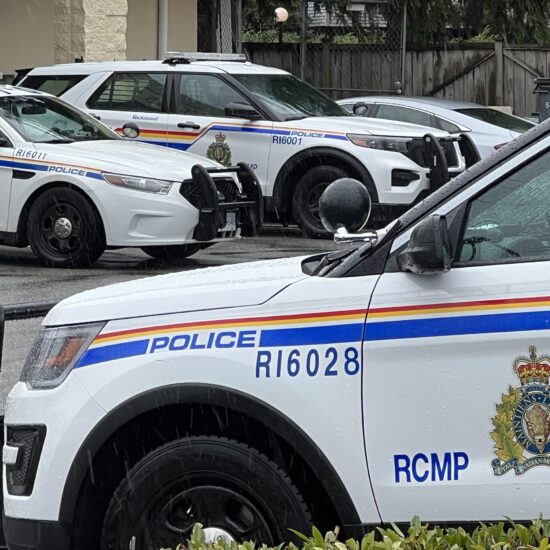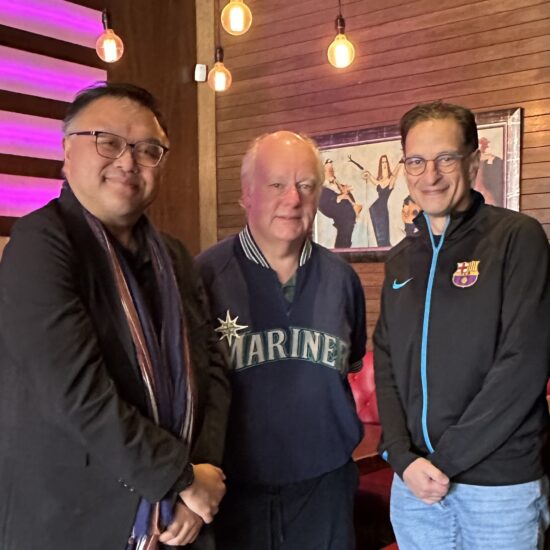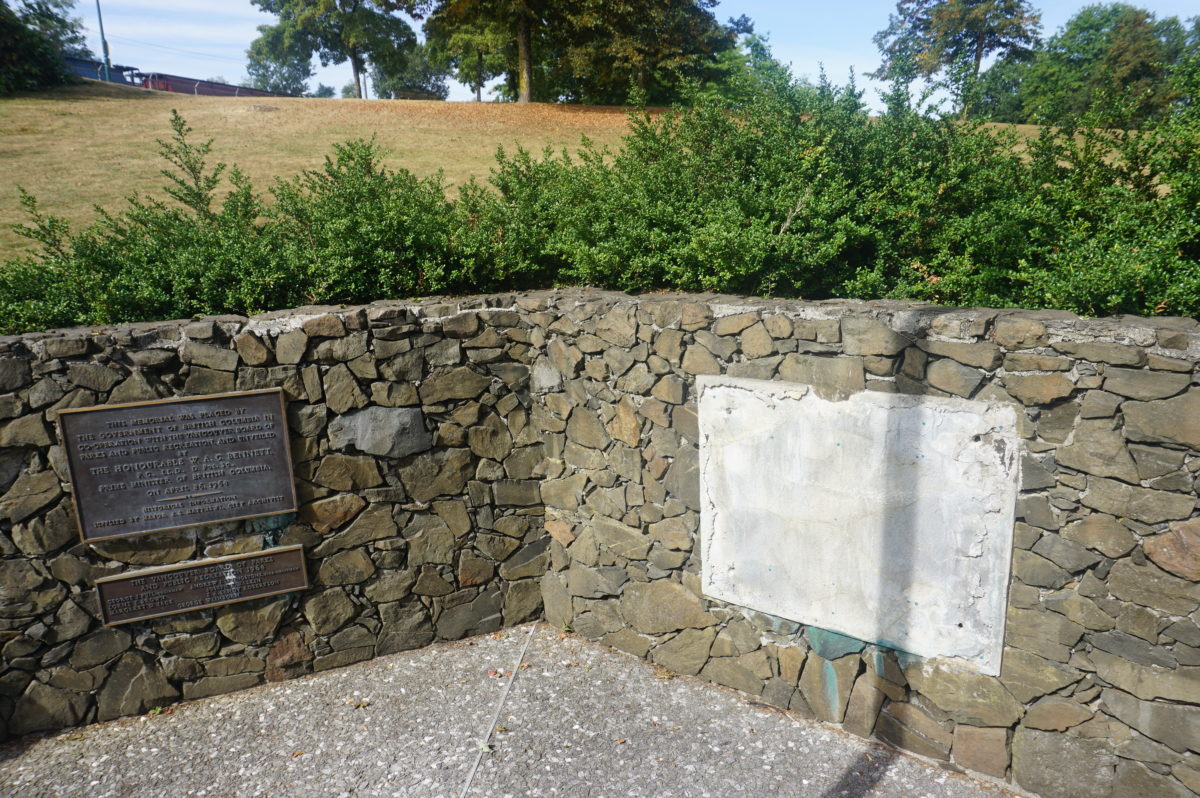
Bob Mackin
Was Vancouver’s most-significant historical marker stolen for what it was made of or how it was worded?
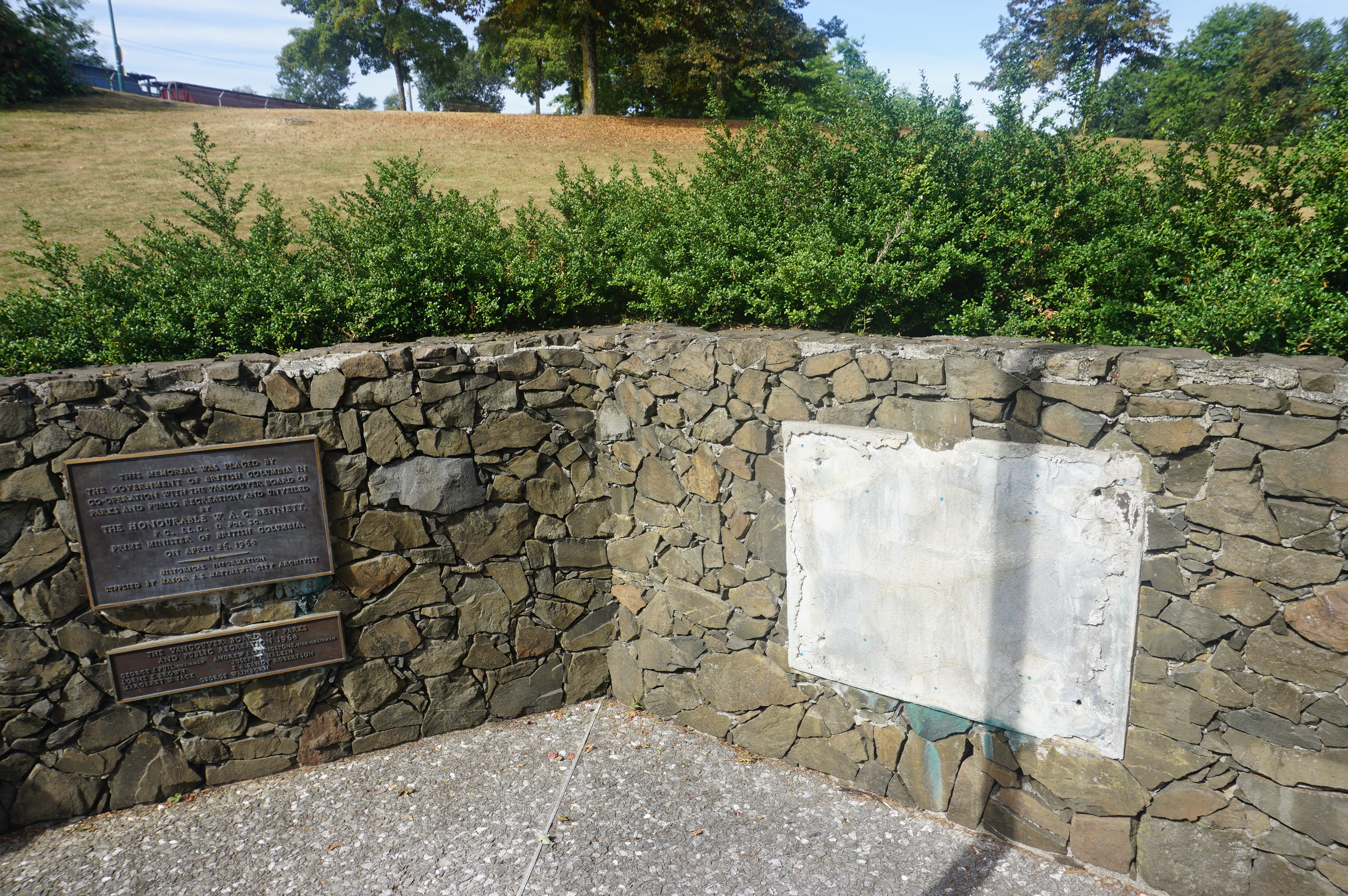
The plaque commemorating the foundation of Vancouver was stolen from New Brighton Park (Mackin)
The “Here Vancouver Began” plaque was installed when B.C. Premier W.A.C. Bennett and Vancouver Mayor Tom Campbell dedicated New Brighton Park at the historic former Hastings Townsite on April 26, 1968.
theBreaker noticed that it was missing while at New Brighton Park on Aug. 20 to photograph a freighter unloading Chinese materials for Victoria’s Johnson Street Bridge project.
Park Board spokeswoman Margo Harper told theBreaker that it was reported as stolen to the Vancouver Police in January, but she said the communications department was only informed a few weeks ago.
“We are seeing an increasing amount of theft, particularly of bronze plaques, so we reviewing potential vulnerability of the remaining two plaques on site,” Harper said.
A news release was not issued, she said, because of other pressing issues in city parks, such as homeless camps. New Brighton Park is undergoing a $3.5 million beautification and it is not clear if the plaque would be replicated.
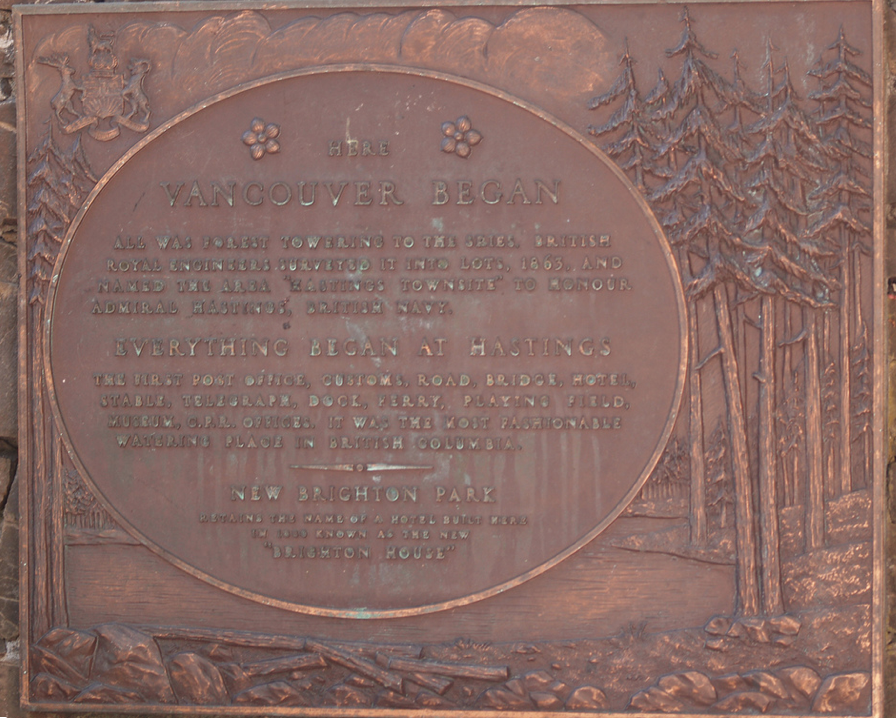
A 2014 photo of the missing New Brighton Park plaque (Fcheng62)
“We are in the final stages of the New Brighton Salt Marsh project with partners from the Port [of Vancouver] and First Nations,” Harper said. “This project involves a significant new interpretive signage component. The new interpretive signs will be installed later in the year with a kiosk structure at the site. Our park development team is working with the nations on that signage.”
Green Party Park Board chair Michael Wiebe did not respond for comment.
The plaque contained the British Columbia coat of arms in the upper left corner, images of dogwood, trees and the Burrard Inlet shore. It read: “Here Vancouver Began… all was forest towering into the skies. British Royal Engineers surveyed it into lots, 1863, and named the area ‘Hastings Townsite’ to honour admiral Hastings, British Navy. Everything Began At Hastings. The first post office, customs, road, bridge, hotel, stable, telegraph, dock, ferry, playing field, museum, CPR offices. It was the most fashionable watering place in British Columbia. New Brighton Park retains the name of a hotel built here in 1880 known as the new ‘Brighton House.’
Two plaques remain on the small, aging plaza, under the Canadian, B.C. and British flags near the outdoor swimming pool. Bennett’s dedication references historical information provided by famed city archivist Major J.S. Matthews, who attended the 1968 ceremony. A smaller plaque lists members of the park board at the time.
Vancouver Historical Society president Michael Kluckner called the stolen marker a “real vintage plaque” that accurately described the beginning of a non-indigenous commercial operation.
Spanish explorers in 1791 and British explorers in 1792 recorded contact with Coast Salish aboriginals.
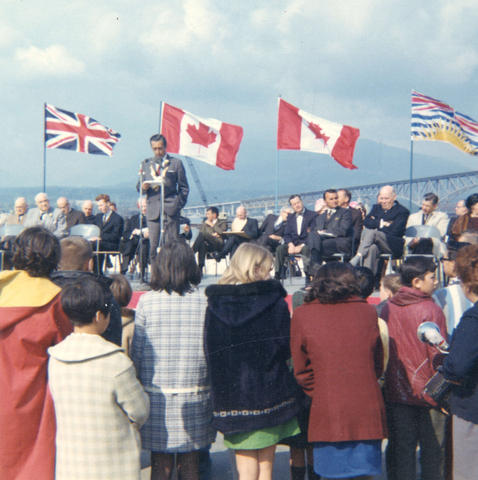
Mayor Tom Campbell speaking at the 1968 dedication of New Brighton Park (Vancouver City Archives)
Controversy is raging on both sides of the border over statues and plaques about 19th century people and events.
The Law Society of B.C. decided last spring to remove a statue of B.C.’s famed “Hanging Judge,” Matthew Baillie Begbie, from its lobby for fear of offending aboriginal people. Begbie sentenced six chiefs to death in 1864 after 20 white road builders were killed in the so-called Chilcotin War, for which Premier Christy Clark apologized in 2014. New Westminster city council is pondering the future of the Begbie statue outside the Royal City’s provincial courthouse and Begbie’s name on a city street.
In March, the Vision Vancouver majority city council asked staff to study reverting to indigenous place names in parts of the city under a Canada 150-related place-naming project.
Several U.S. city and state governments are removing statues and plaques about the Confederacy in the Civil War because of connections to slavery.
In Bellingham, Wash., south of the U.S./Canada border, civic authorities removed a sign from a bridge named for Confederate general George Pickett on Aug. 18. The move was in reaction to the violent Charlottesville, Va. protest between white supremacists and anti-fascist demonstrators.
Before the Civil War, Pickett was the American commander in the Pig War on San Juan Island, an 1859 standoff between American and British soldiers after an American farmer shot a Hudson’s Bay Company hog.







